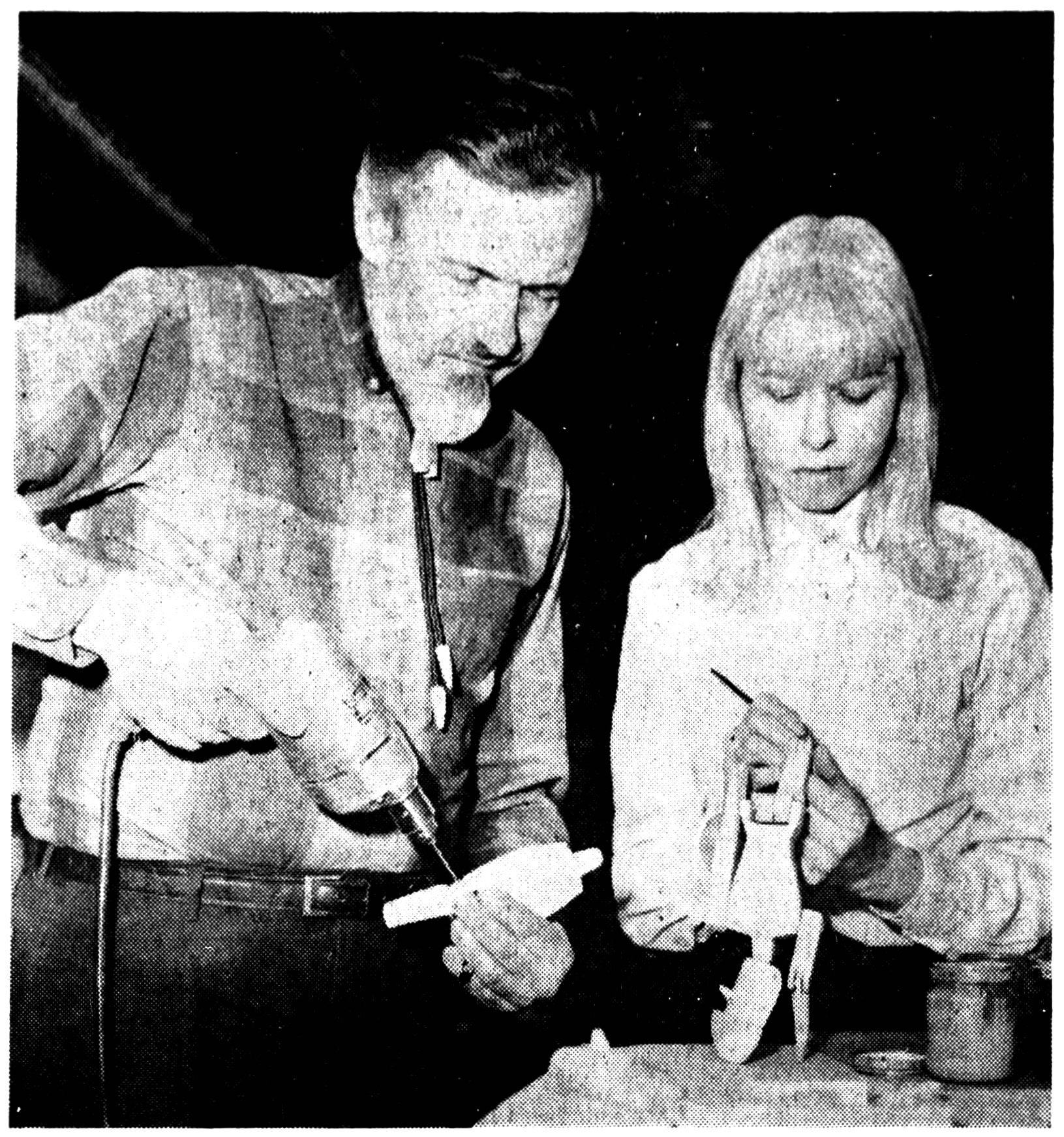The Man Behind The Mosquitoes
BACK in 2015 during our first Mosquito Month, we ran a series of articles from The Pocono Record that covered Oppenheim’s Magic Puppet World. Recently, I came upon another article about Ralph and Shirley Oppenheim and their Magic Puppet World—this time from nearby Allentown, PA’s The Morning Call from 1967—complete with a picture!
Monroe Puppeteers Automate Their Art
by WEALTHY KORTZ | The Morning Call, Allentown, PA • 8 February 1967
Oppenheim’s Music Puppet World near Snydersville takes the age-old art of puppetry and harnesses it to automation to depict in pantomime stories full of whimsy, humor and absorbing action.
|
|
The work of Ralph and Shirley Oppenheim represents 15 years of creative effort and study. It is an enchanting, completely new entertainment medium with an appeal to young and old alike.
Marionettes perform without puppeteers. Their strings are pulled by automatic precision machinery, giving them more versatility of flowing motion.
Although self-educated in the field of electronics and other necessary components, the Oppenheims achieved their success—admittedly—by trial and error.
Both native New Yorkers, the Oppenheims decided to settle in the Poconos because they like the area and it was familiar to them since childhood.
Bought Farm
They opened their Magic Puppet World about three years ago shortly after purchasing the old Rupert farm along business Route 209 about six miles west of Stroudsburg.
The couple polished the 110-year-old barn discreetly to preserve the original meaning of the landmark and set up 17 exhibits. Each is self-contained within its glass-enclosed cabinet stage and electronic impulses to present the series of pantomime stories that have been tastefully arranged.
Tedious hours were spent perfecting the impulses for complete synchronization; the careful uniting of silk threads to as many as 13 joints of the single puppet with its mechanical puppeteer levers and cams; the careful lighting effect and art work. It takes the husband and wife team a minimum of from two to four months to perfect a single exhibit.
|
|
The largest exhibit in “Ballet Square” of the old barn is the “doll ballet.” This took several years and nearly threadbare patience to master the movement of the seven eight inch high marionettes that perform in true ballet technique.
There are more than 200 strands of silk thread and 32 working levers with companion cams that control the precision. Another problem was synchronizing the “thought1ess” ballerinas with the music.
Backstage Peek
Visitors are invited “backstage” by the Oppenheims at this particular performing exhibit so they may view the automatic machinery controlling the miniature dancers.
Because of the intricate mechanism and its complications, the exhibit is personally attended by its creators at each performance.
Mrs. Oppenheim, a former ballet student, worked closely with her husband in perfecting the movements.
The beautifully hand-painted verse at each exhibit is the handiwork of Mrs. Oppenheim, who is a professional artist. The verses, describing the action, were composed by her husband.
Verse adds a warm appeal. For example, at the “Rival Romeos” Oppenheim composed:
“Two Romeos, not one but two!
Came to Juliet’s house to woo!
One wooed her with a simple song
Until the other came along;
From him she tried to take a rose,
And nearly fell upon her nose.
Which one would save her?
Watch and see
Who puts her back on the balcony
And see what kisses this one got.
See the other one get . . . a flower pot!”
The rustic road that visitors take leads them through Lilliput, “The Littlest world in the World,” where a four-foot Gulliver introduces the Lilliputian marionettes less than three inches high.
Children’s Stories
In another area exhibits are devoted to favorite children’s stories about Miss Muffet, Cinderella and the like.
Taped music box melodies enhance the background for the over-all atmosphere.
Oppenheim, who sports a flattering mustache and goatee left over from the Stroudsburg Sesquicentennial, is a former pulp fiction adventure story writer.
Holder of several patents, Oppenheim invented a textile machine to make raffia. The ingenious operation of his magic puppets is also under patent.
The puppets were almost a first love of this gifted man — dating back to boyhood in a boarding school.
The stall area of the old barn has been transformed into a comfortable workshop for the couple. Shared only by their two schnauzers, Bridget and Maggie.
It is in this area that the couple develop their “dolls” from chunks of white Canadian cedar, pine, birch and virgin maple. They also make clever items of jewelry and souvenirs of their exhibits. A craft shop that is a part of complex is open during the off season of the Magic Puppet World which is open to the public from May to October.
Ralph and Shirley Oppenheim are the originators of automatic puppetry. They have won national recognition for their new medium of special projects commissioned by some of the country’s leading industrial companies — for such showplaces as the New York World’s Fair and the Chicago Museum of Science and Industry.
They had been approached by a representative of Walt Disney a couple of years ago — but declined all offers rather than lose their individual identity.
- Download “Monroe Puppeteers Automate Their Art”
(8 February 1967, The Morning Call)
With Ralph’s death in August 1978, Shirley closed up the Oppenheim Gallery and Puppet World and moved back to New York City to be near family. She passed away in 2006.






